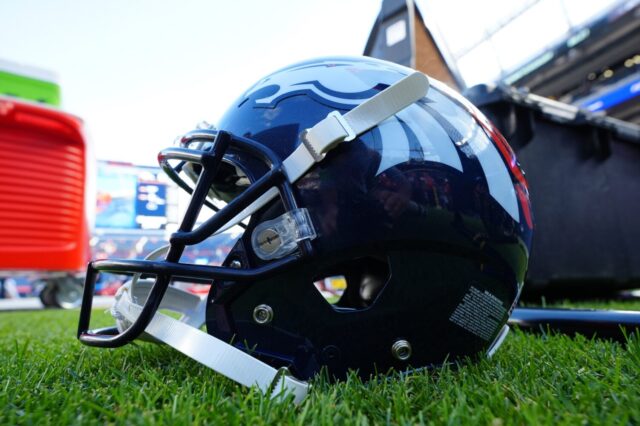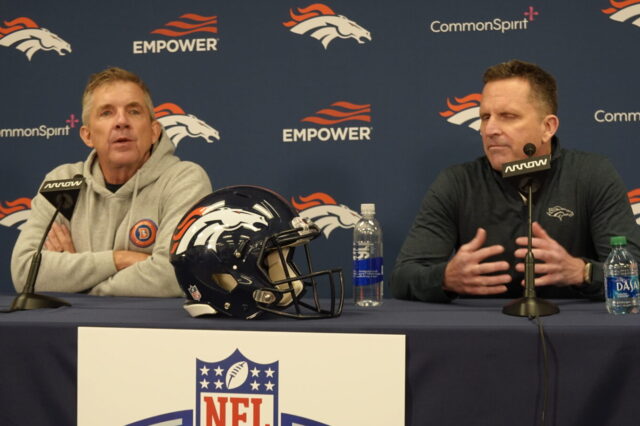No ifs, ands or buts: Jake Butt was a steal on the third day of the draft. This tight end would have been a first-round talent if he didn’t have nagging ACL problems that Broncos fans are so well-educated on now. When he reaches 100 percent, the Broncos will have a lethal offensive weapon, and the concerns many have about his health will prove to be unfounded. Simply put, Butt is going to be ready to go and he’s going to be a perfect fit for Denver’s quarterbacks.
The first reason Trevor Siemian, Paxton Lynch and Chad Kelly can be so excited about Butt is his pass-catching ability. He was the best receiver on the Wolverines roster for the last two seasons, maybe even the last four, depending on how you view his former teammate and now Carolina Panthers receiver Devin Funchess. In crucial situations, Jim Harbaugh and whoever was his quarterback made concerted efforts to get Butt the ball. This was on a roster with Amara Darboh, and Jehu Chesson, both who were selected ahead of Butt in 2017. The Broncos haven’t had a highly productive pass catcher at tight end since the departure of Julius Thomas two years ago.
Why would Harbaugh rely on Butt over his receivers? For many, many reasons. First, Butt’s hands are like glue. You could hear audible gasps in Michigan Stadium whenever he dropped a ball. If Jake Rudock or Wilton Speight got the ball even in the region, he’d come up with the catch.
The second reason Harbaugh relied on him, and why he’s going to make life so much easier for offensive coordinator Mike McCoy, is his route-running ability. Butt is a zone buster. His recognition of zone coverage is uncanny. He realizes what zones linebackers and the secondary are responsible for, and then quickly settles into the nearest no-man’s land to create a big, open target for his quarterback. He’s effective even in man coverage. While his agility isn’t out of this world, he is smart with his body and seals off his defender well to make an interception or deflection virtually impossible. With a trio of quarterbacks who range from relatively inexperienced to totally inexperienced throwing him the ball, protecting them from interceptions will be critical.
Number three on the list is his ability to move the chains. He may not run for 30 yards after a catch, but he’ll damn sure make the catch and rumble for as many yards as he can. Butt was second on the team only to Darboh in receptions in each of his junior and senior seasons. What’s more, he was only seven receptions behind Darboh in his junior year and just 11 back in his senior year. And we’re not taking solely dink-and-dunk passing. Butt averaged at least 10 yards per reception in all of his four years at Michigan. For the past two years Denver has had a propensity for picking up one less yard than needed on third down. That won’t happen when Butt is the target.
What’s another thing he learned in college that’s going to boost Denver’s offensive production? How to chip a defender on his way to running a route. Rudock and Speight moved around in the pocket like they were wearing cleats dipped in concrete. If Butt were to simply run his route, his quarterbacks would have been sacked more often than not. Because of this, he has become adept at chipping the defender across from him in order to slow him down on his way to the quarterback, something that the Broncos’ starter will surely need in abundance.
Lastly, let’s address his injury issues. Yes, Butt tore his ACL in Michigan’s bowl game against Florida State. But the thing people haven’t considered is his usage in college. He was so valuable to Harbaugh that he was on the field for nearly every offensive play. Let’s just look at his backup’s stats. Devin Asiasi was the second-most-used tight end for Michigan last season. His numbers? Two receptions for 18 yards and a touchdown. He was never used is my point. Butt was the tight end about 98 percent of the time, and he played in college for four years logging that kind of mileage. And we all know that if you overuse something, eventually if breaks.
Butt has now undergone ACL repair on both knees. That’s not great. The good news? He came back sooner than expected and as strong as ever after his first surgery. He said in his introductory phone call with the Denver media that he expects the same this time around, meaning he could be back at the start of the season. Broncos general manager John Elway said an August/September timetable is a possibility. With a more balanced load in the pros, Butt can hopefully put his injury past exactly there – in the past.
Even Butt has his faults, however. His is his pass-blocking ability. He’s really not the type of tight end that you ask to stay back and block. He doesn’t have the best pass-blocking footwork, so it’s best to utilize him as a receiver in the passing game. His run blocking is adequate, but nothing special.
If I’ve learned anything from watching Butt at Michigan, it’s how often he bailed out average quarterbacks. His numbers were good because he’s smart and he recognizes when a quarterback is going to face pressure, then he gets open as soon as possible so they can get the ball out of their hands and into his. With three inexperienced quarterbacks on the roster, Butt is the perfect man to provide them with an emergency outlet valve, especially if the backs out of the backfield are unreliable in the passing game.
Butt was the highest value pick in Denver’s draft by a long shot. Line him and blocking extraordinary Virgil Green up in a double tight end set and get the best of both worlds – extra protection and a wide receiver level pass catcher and route runner. He checks a lot of boxes for the Broncos’ needs.



